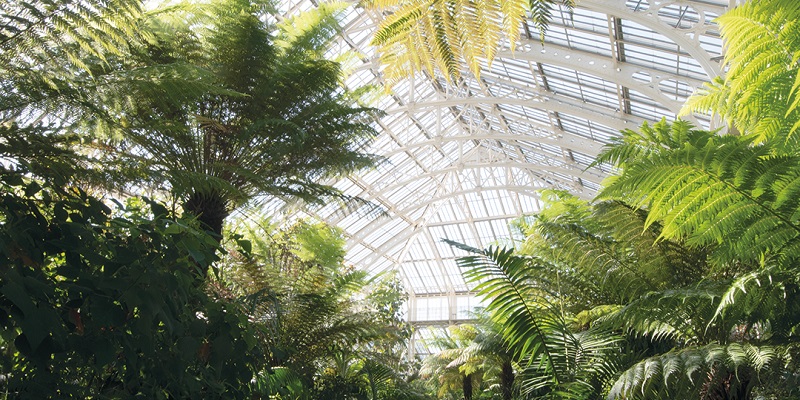
Tapping into the myriad uses of plants and fungi could save people and the planet, says new report
University of Leeds researchers have joined forces with the Royal Botanic Gardens, Kew to conduct research into the plants and fungi that could be used as a source of energy as well as assessing the species with the potential to be scaled-up with innovative technologies.
This research forms part of a joint report highlighting the enormous potential for plants to produce energy and contribute towards achieving the UN's Sustainable Development Goals.
The State of the World's Plants and Fungi report takes a deep dive into the state of the world's plant and fungal kingdoms globally and shows how we are currently using plants and fungi, what useful properties we are missing, and what we risk losing.
It brings together 210 scientists from 42 countries, including University of Leeds researchers and their collaborators, led by Professor Jon Lovett from the School of Geography, who is Chair in Global Challenges and an Honorary Research Fellow at Kew.
The Leeds group collaborated with researchers in Africa, Indonesia, Nepal, India and Mexico on capacity building; exploring the potential for local plants and fungi to provide energy in small-holder farms; and developing new ways of creating bioenergy from invasive plants.
"Demand for energy is a cause for climate change and deforestation, but it doesn't need to be this way. Plant power can be harnessed to provide renewable energy..."
Their work highlights that plants and fungi can make a huge contribution to reducing both carbon emissions and energy poverty.
 Seaweed drying on Sumba Island, Indonesia. Seaweed is an important export for the food industry and residue from processing is a potential source of bioenergy. Credit: Jon Lovett
Seaweed drying on Sumba Island, Indonesia. Seaweed is an important export for the food industry and residue from processing is a potential source of bioenergy. Credit: Jon Lovett
Renewable energy is part of Sustainable Development Goal (SDG) 7 which aims to "ensure access to affordable, reliable, sustainable and modern energy for all", but also has strong impacts on the other SDGs, such as those relating to health and wellbeing.
For example, in many countries traditional wood fuel burning is still a major source of energy. However, not only is this an unstainable energy source and negatively impacts the environment through logging, it is a major cause of death and illness for women and children through indoor air pollution caused by smoke.
Good quality energy supply can tackle multiple SDGs and the report emphasises the untapped potential of plants to achieve this. It can also help to alleviate poverty by facilitating micro-enterprises such as food processing or powering lights and machinery.
Professor Lovett said: "It's no longer enough for us botanists to simply draw attention to the horrific levels of biodiversity loss on the planet, we have to become part of the solution. Demand for energy is a cause for climate change and deforestation, but it doesn't need to be this way. Plant power can be harnessed to provide renewable energy and create biodiverse energy gardens.
"The Leeds energy researchers and our partners from the global renewable energy community held a joint conference with Kew on Plant Power in June last year, it's great to be coming together again in this prestigious conference.
"Extinction is avoidable. It's up to everyone to take action."
 Meeting in Kampala - left to right: Abdul Busulwa, Professor Lovett's former PhD student who is blind; Mary Suzan Abbo, Director of the Centre for Research in Energy and Energy Conservation at Makerere University; and Professor Lovett. The meeting focused on how to integrate with renewable energy revolution with the needs of people with disabilities.
Meeting in Kampala - left to right: Abdul Busulwa, Professor Lovett's former PhD student who is blind; Mary Suzan Abbo, Director of the Centre for Research in Energy and Energy Conservation at Makerere University; and Professor Lovett. The meeting focused on how to integrate with renewable energy revolution with the needs of people with disabilities.






